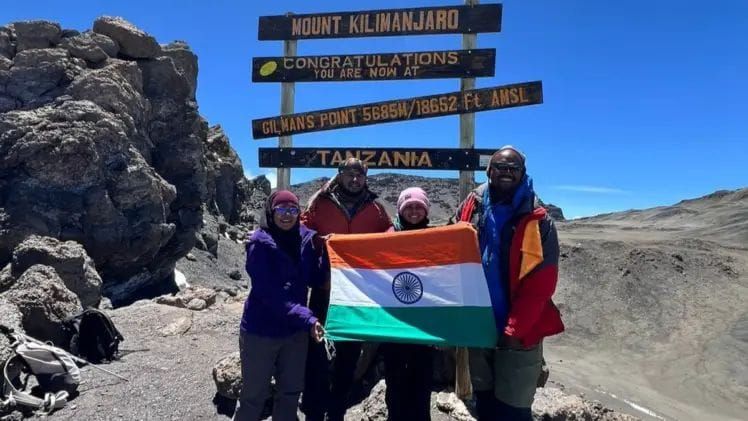
In a remarkable achievement, 12-year-old Dhairya Kulkarni from Satara has successfully scaled Mount Kilimanjaro, Africa’s tallest mountain, standing at approximately 5,895 metres (19,340 feet).
Located in Tanzania, climbing Kilimanjaro is considered one of the most challenging feats for trekkers, as it is the largest free-standing mountain in the world, meaning it is not part of any mountain range.
Dhairya has made history as the first girl in the country to climb Kilimanjaro independently, without her parents or guardians. She began her trekking journey at the age of six and has since conquered numerous peaks. Upon her return to Satara, she received a warm and enthusiastic welcome from her community.
Kilimanjaro consists of three volcanic cones: Kibo, Mawenzi and Shira. Kibo is the tallest and serves as the summit, characterised by its snow-capped peak. In contrast, Mawenzi and Shira are extinct. Kibo is considered dormant and could potentially erupt again, with scientists estimating its last eruption occurred approximately 3,60,000 years ago. The highest point on Kibo’s crater rim is known as Uhuru, which translates to "freedom" in Swahili. The mountain is surrounded by a national park that is home to a variety of mammals, including many endangered species.
While climbing Kilimanjaro is often viewed as one of the easier climbs due to the lack of technical skills or specialised equipment (such as ropes, harnesses, crampons, or ice axes) required, many climbers face challenges, primarily due to altitude sickness. It is widely recommended to take longer routes to allow for better acclimatisation. The fastest ascent and descent of Kilimanjaro was achieved by Swiss mountaineer Karl Egloff, who completed the journey in just 6 hours and 42 minutes in 2014.